Largest lakes in the world: On our planet, we’re surrounded by some truly incredible lakes, each with its own story to tell. But among these remarkable bodies of water, there’s one that truly stands out as an aquatic giant.
Nestled between two continents and shared by several countries, this immense lake isn’t just the biggest in terms of surface area; it’s also a place of extraordinary natural beauty and rich cultural significance.
So, come along with us as we embark on a journey to discover the majesty and enchantment of Earth. The largest lakes in the world – a genuine wonder of nature that has captivated people from all corners of the world for centuries.
SEE ALSO:
The largest lakes in the world
Here are some of the largest lakes in the world, all including their features and what makes them unique
1. Lake Baikal is one of the largest lakes in the world
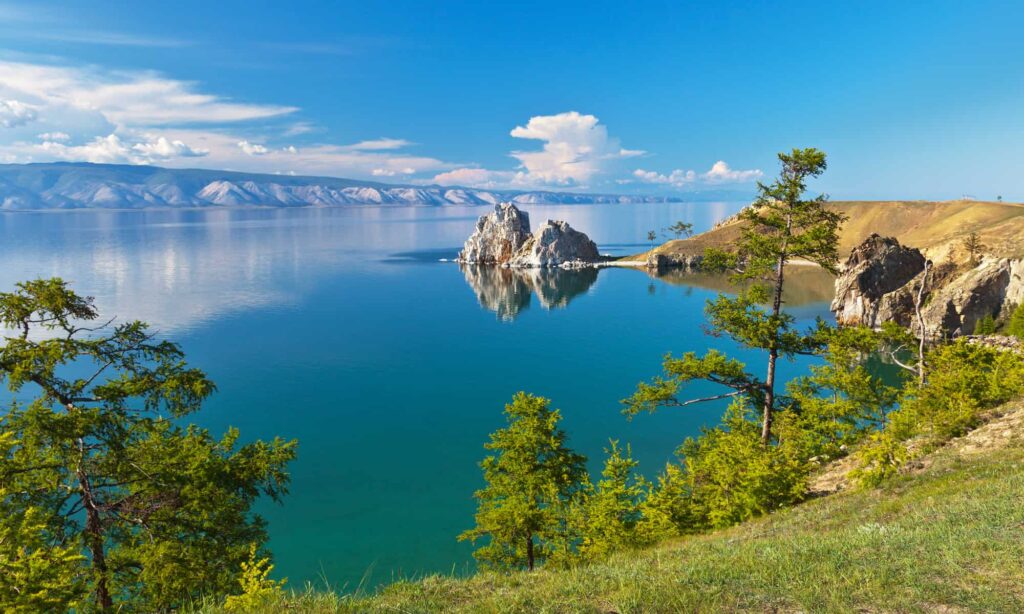
Lake Baikal is often referred to as the deepest freshwater lake in the world, but it is not the largest lake in terms of surface area. Lake Baikal is located in Siberia, Russia, and it is known for its exceptional depth and unique biodiversity. It is estimated to be the deepest lake in the world, with a maximum depth of around 5,387 feet (1,642 meters).
However, when it comes to the largest lake by surface area, the title typically goes to the Caspian Sea, which is often considered the world’s largest saltwater lake.
The Caspian Sea is bordered by five countries: Russia, Kazakhstan, Turkmenistan, Iran, and Azerbaijan. It has a much larger surface area than Lake Baikal, covering approximately 143,000 square miles (371,000 square kilometres) or more, depending on the water level.
So, while Lake Baikal is the deepest freshwater lake, it is not the largest lake in the world in terms of surface area.
2. Lake Victoria Africa
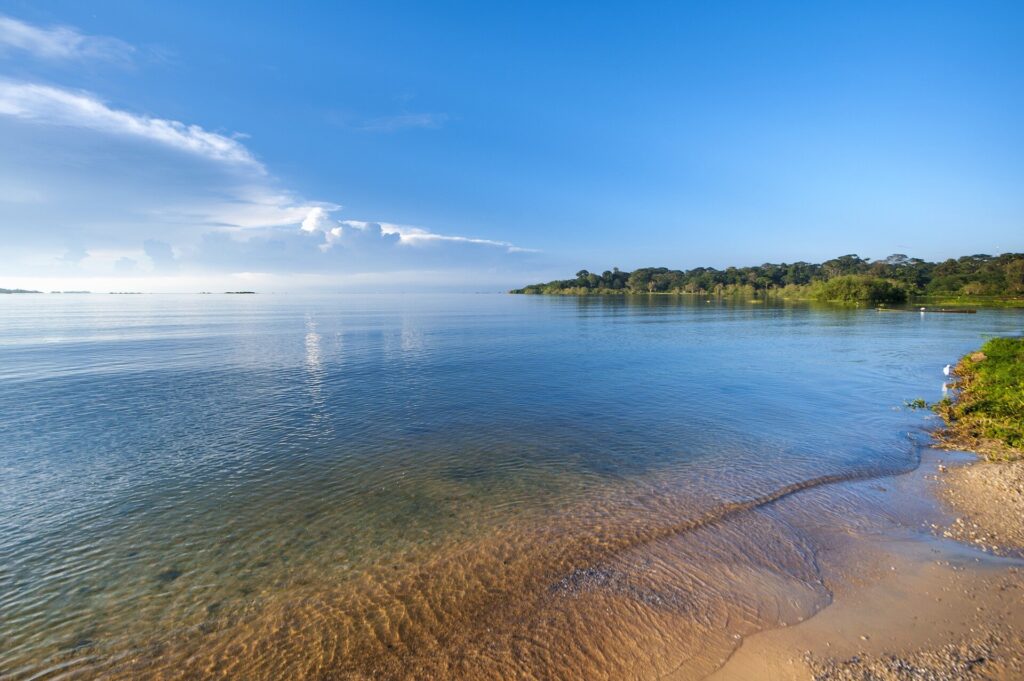
Lake Victoria is one of the largest lakes in the world by surface area and is indeed often considered one of the largest freshwater lakes on Earth. It is located in East Africa and is shared by three countries: Tanzania, Uganda, and Kenya. Lake Victoria covers an approximate surface area of about 26,828 square miles (69,484 square kilometres).
In terms of surface area, Lake Victoria ranks among the largest lakes globally and is significantly larger than Lake Baikal, which is known for its depth but has a smaller surface area.
However, Lake Victoria is not as deep as Lake Baikal; its maximum depth is approximately 270 feet (82 meters). Nonetheless, due to its substantial surface area, it is rightly considered one of the largest lakes in the world.
READ ALSO: Top 10 Richest Cricketers in the World
3. Great Bear Lake Canada
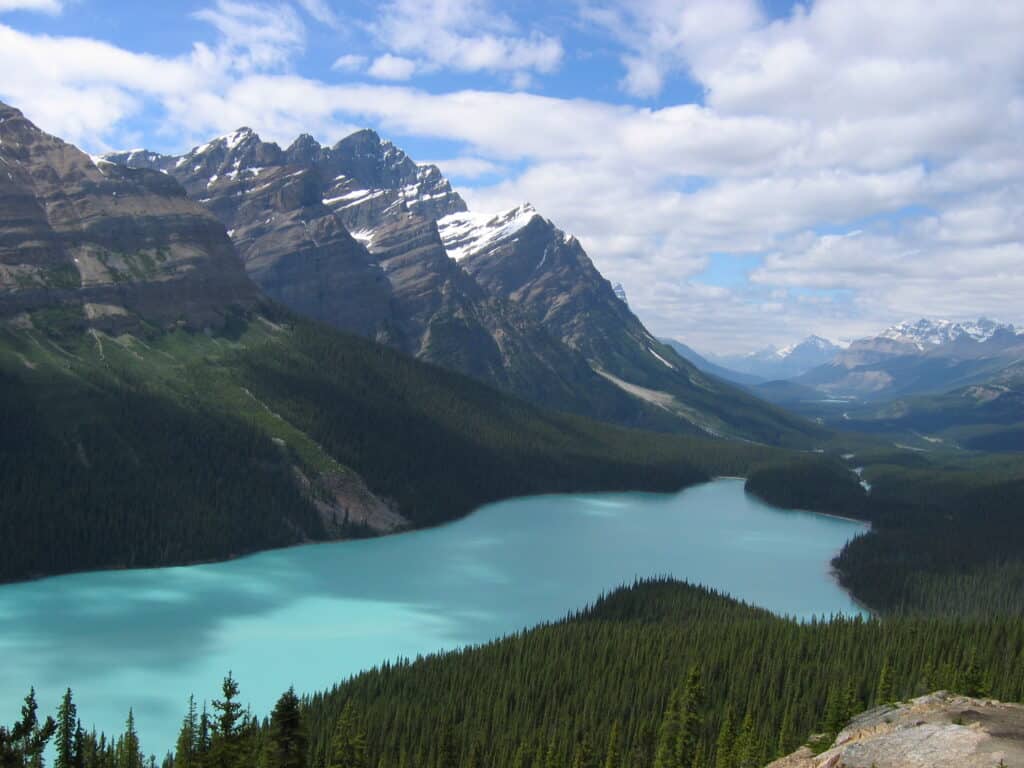
Nestled in the Northwest Territories of Canada, Great Bear Lake is one of the largest lakes in the world and has incredible natural wonders you can’t help but marvel at. It’s not just big; it’s massive! Picture this: it sprawls out over an area of about 31,153 square kilometres, roughly equivalent to 12,028 square miles.
That makes it the largest lake entirely within Canada and the eighth largest in the world when it comes to surface area. And when we talk about its depth, it’s nothing short of jaw-dropping. At its deepest point, it reaches about 446 meters, or 1,463 feet, which puts it among the deepest lakes in North America.
But what really sets Great Bear Lake apart is the sheer amount of water it holds. We’re talking about a whopping 2,236 cubic kilometres or 537 cubic miles! It’s like a giant, shimmering bowl cradled between the land.
When you look at it from above, you’ll notice it has this lovely crescent shape, with all sorts of intriguing bays and peninsulas along its edges.
Here’s where it gets really interesting: Great Bear Lake isn’t just a massive body of water; it’s a thriving ecosystem.
The lake’s crystal-clear waters are home to a diverse cast of characters, including lake trout, Arctic grayling, whitefish, and pike. And that’s just below the surface. Around the lake, you’ll find caribou and other critters making themselves at home in the surrounding wilderness.
And let’s not forget the role it played in history. European fur traders and explorers ventured into its remote wilderness back in the 18th and 19th centuries. Great Bear Lake was a pivotal player in the fur trade and later became a hub for mineral exploration.
4. Lake Malawi Africa
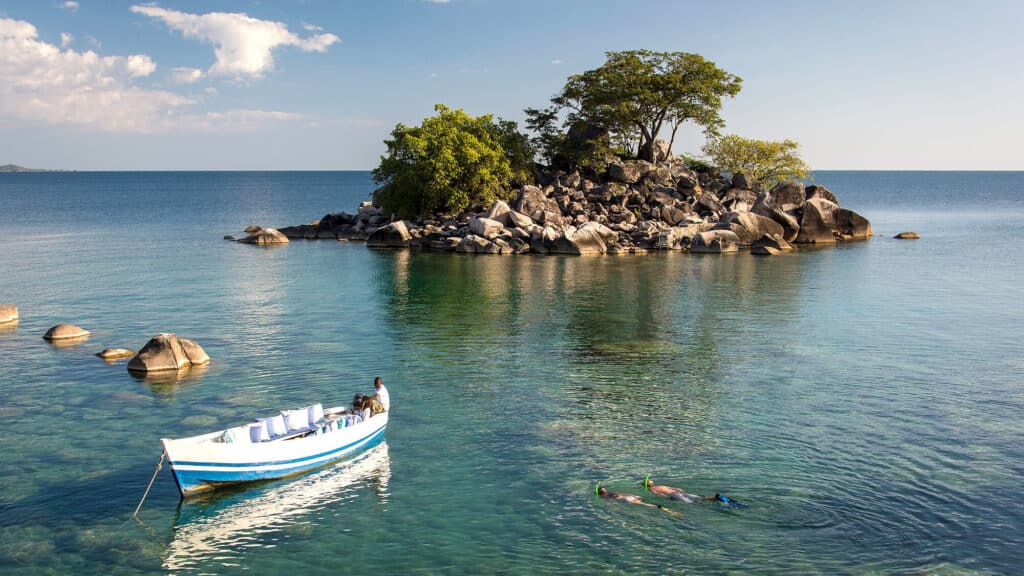
Lake Malawi, also known as Lake Nyasa in some regions, is one of the largest lakes in Africa and is often considered one of the largest freshwater lakes in the world by volume. While it may not be as large in terms of surface area as some other well-known lakes, its immense depth contributes to its significance.
Lake Malawi is located in the East African Rift system and is shared by Malawi, Mozambique, and Tanzania. It has a surface area of approximately 11,400 square miles (29,600 square kilometres), making it one of Africa’s largest lakes by surface area.
What sets Lake Malawi apart is its considerable depth. It is one of the deepest lakes in the world, with a maximum depth of around 2,316 feet (706 meters). This depth, combined with its substantial volume of water, contributes to its classification as one of the largest lakes by volume.
READ ALSO: 20+ Most Famous Korean Actors in 2023
5. Great Lake Erie
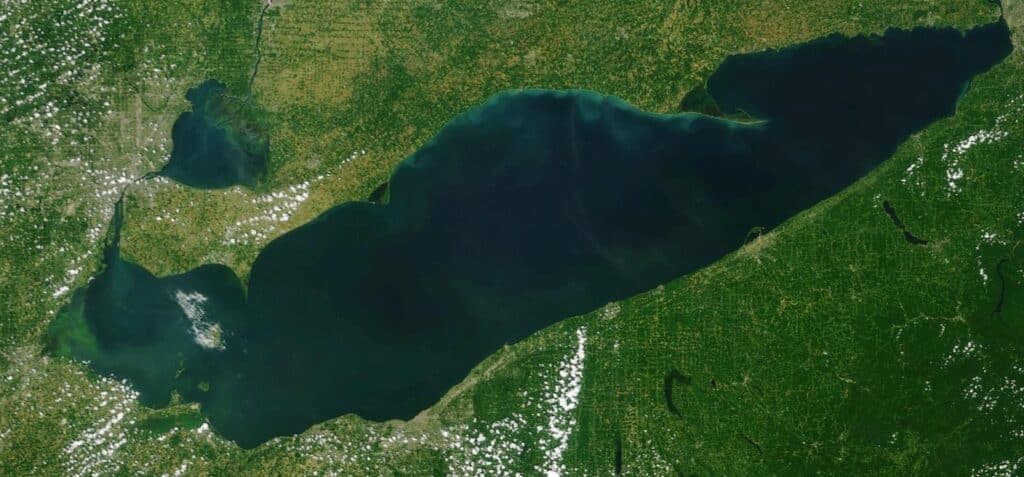
Lake Erie, one of North America’s Great Lakes and one of the largest lakes in the world, holds its own on the continent but doesn’t quite measure up on a global scale.
Lake Erie covers about 9,910 square miles (25,700 square kilometres), making it the fourth largest among its Great Lake siblings. The lineup from biggest to smallest goes like this: Superior, Huron, Michigan, Erie, and Ontario.
While Lake Erie plays a significant role in North America, it doesn’t make the cut as one of the world’s largest lakes when you consider its surface area. Other lakes, such as the Caspian Sea, Lake Superior, and Lake Victoria, dwarf it in size on the global stage.
6. The Caspian Sea
You know that big body of water nestled between Europe and Asia? One of the largest lakes in the world, you might be surprised to learn that it’s not a sea, even though we often call it the Caspian Sea. Nope, it’s actually one of the biggest lakes on our planet. It’s like nature’s giant bathtub!
This enormous lake covers an area of about 371,000 square kilometres (around 143,000 square miles). That’s so big that it acts as a natural border for several countries in the area. It’s like a watery line on the map.
What makes the Caspian Sea really cool is its history. Way back, millions of years ago, it used to be part of a massive ancient sea. Today, it’s a natural wonder, surrounded by all kinds of landscapes, from dry deserts to lush coastal areas.
Here’s the interesting part: the Caspian Sea is a lifeline for the countries that live along its shores. It gives them important stuff like fish and energy resources. And guess what? It’s like a fish heaven! You can find all sorts of fish in its waters, including sturgeon, which happens to make some of the fanciest caviar in the world.
But here’s the thing – this giant lake has been a superhighway for trade for centuries. It’s like a water-based superhighway that connects the East and the West. Over the years, the shores of the Caspian Sea have seen empires rise and fall and the exchange of goods and ideas between different cultures. It’s a bit like a time capsule of history.
But, like many amazing places on Earth, the Caspian Sea is facing some challenges. Pollution and overfishing are causing problems for this natural wonder. People are working hard to protect and preserve it for the future. After all, we want to keep enjoying its beauty and all the good things it provides for many generations to come.
7. Lake Superior
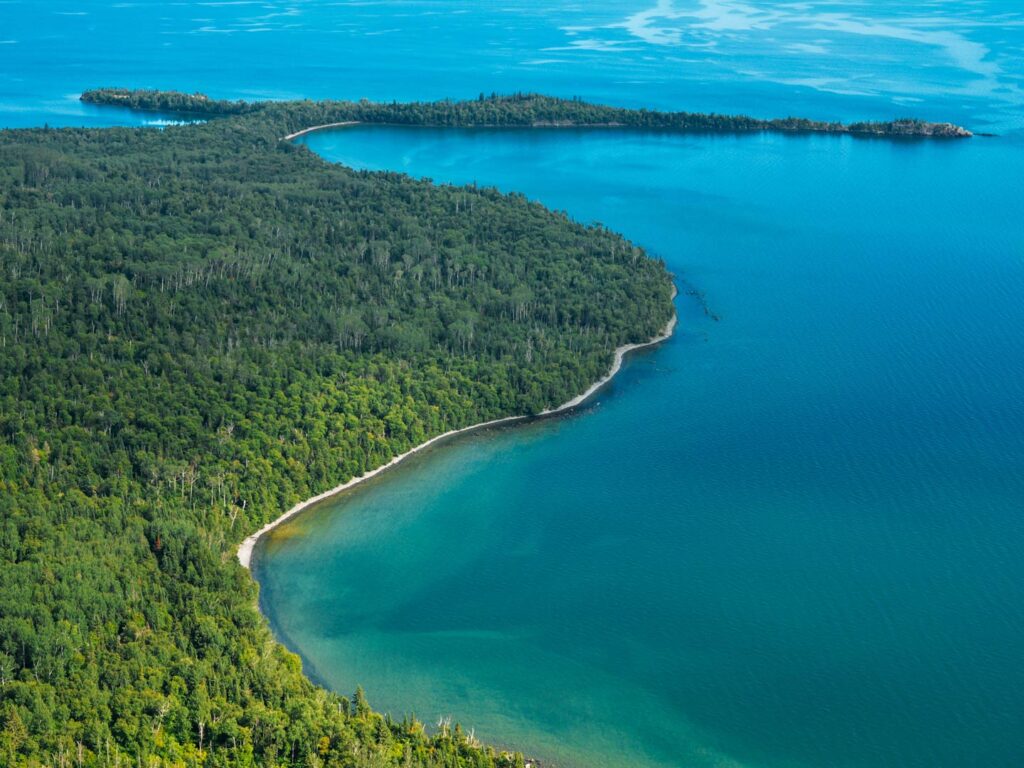
Lake Superior is indeed one of the largest lakes in the world by surface area and volume. It is the largest of the five Great Lakes of North America, primarily in the United States and Canada. Here are some key facts about Lake Superior: Lake Superior has a surface area of approximately 31,700 square miles (82,100 square kilometres).
This makes it the largest freshwater lake in the world by surface area. It is also one of the largest freshwater lakes in the world by volume. Lake Superior contains approximately 2,900 cubic miles (12,100 cubic kilometres) of water. It holds more water than all of the other Great Lakes combined. It is known for its great depth.
Its maximum depth reaches about 1,332 feet (406 meters). The average depth, however, is around 483 feet (147 meters).
The lake is located in northern North America, bordering the U.S. states of Minnesota, Wisconsin, and Michigan to the south and the Canadian province of Ontario to the north. It is also connected to the other Great Lakes through a series of locks and canals.
8. Lake Tanganyika
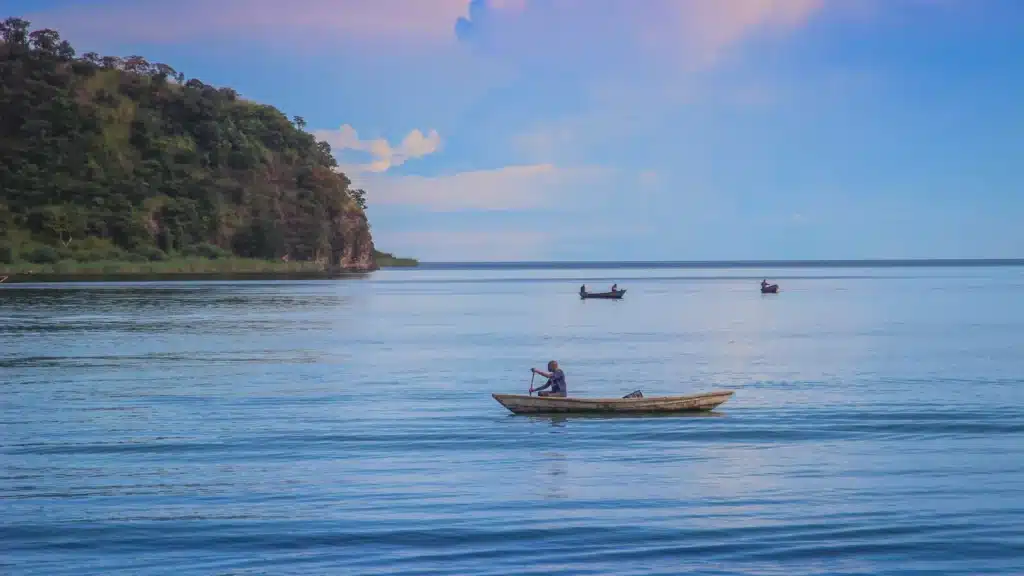
Lake Tanganyika is a stunning African gem nestled in the heart of the continent. It’s not just any lake; it’s one of the largest lakes in the world and one of the biggest and most breathtaking freshwater lakes on Earth.
This massive water wonderland, cradled by the East African Rift Valley, stretches an astonishing 418 miles (673 kilometres) long and dives to jaw-dropping depths of 4,820 feet (1,470 meters). Its sheer size is mind-boggling, and its beauty is spellbinding.
Picture this: Lake Tanganyika’s shores span four African nations – Tanzania, the Democratic Republic of the Congo, Burundi, and Zambia. Each country offers a unique view of the lake’s awe-inspiring charm.
It’s like nature’s masterpiece, surrounded by lush, green landscapes and guarded by rugged mountains. This place is a testament to the ever-changing beauty of our planet.
But what sets Lake Tanganyika apart isn’t just its size and natural grandeur. This ancient lake is a treasure trove of life. Imagine over 350 species of fish calling it home, including the astonishingly diverse and colourful cichlid family.
They’ve evolved into a dazzling array of unique forms, showcasing the incredible wonders of evolution right here in the lake’s depths.
READ ALSO: 15 Most Populated Cities in the World
Conclusion
The largest lake in the world is much more than just a giant body of water on a map. It’s a living example of how nature and people interact in incredible ways. This enormous lake sits right between two continents and is shared by different countries.
It’s like a giant magnet, drawing us in with its beauty and history. The peaceful shores and the diverse traditions it has nurtured remind us of how our environment shapes our past and culture. By exploring and safeguarding such amazing natural places, we make sure that the legacy of Earth’s biggest lake keeps inspiring and astonishing generations to come.
FAQ
Which is the largest lake in Africa?
Lake Victoria: Lake Victoria is not only the largest lake in Africa but also the largest tropical freshwater lake in the world. It is located in East Africa and is shared by three countries: Tanzania, Uganda, and Kenya. Lake Victoria covers a vast surface area, approximately 26,828 square miles (69,484 square kilometres), making it a prominent geographical feature in the region. It is known for its size and ecological significance, supporting diverse wildlife and serving as a crucial water resource for the surrounding communities.
What is the 2nd largest lake in Africa?
Lake Tanganyika: Lake Tanganyika ranks as the second-largest lake in Africa and is another remarkable natural wonder on the continent. It is situated in the East African Rift Valley and stretches an astonishing 418 miles (673 kilometres) in length. This lake is renowned for its incredible depth, reaching depths of up to 4,820 feet (1,470 meters). Lake Tanganyika’s shores border four African nations: Tanzania, the Democratic Republic of the Congo, Burundi, and Zambia. It is not just a vast body of water; it’s a treasure trove of biodiversity, housing over 350 species of fish, including the colourful cichlid family, showcasing the wonders of evolution within its depths.
What are the 4 largest lakes in Africa?
The four largest lakes in Africa, in terms of surface area, are:
Lake Victoria
Lake Tanganyika
Lake Malawi (also known as Lake Nyasa)
Lake Turkana
